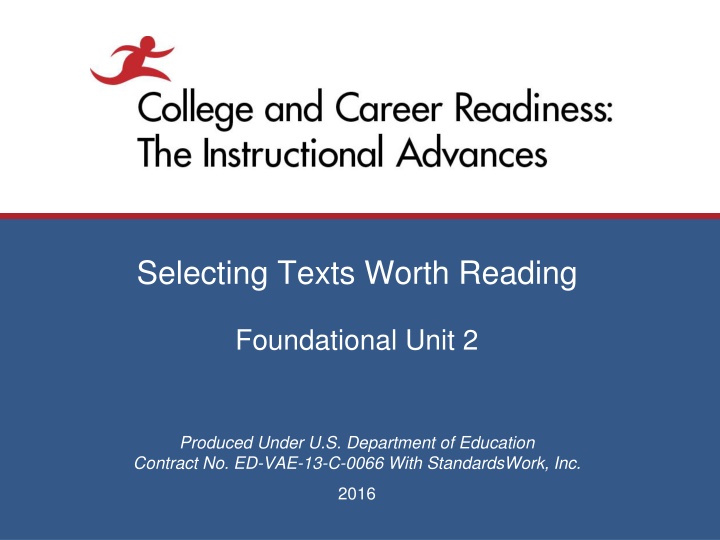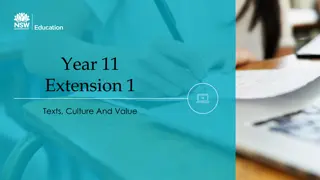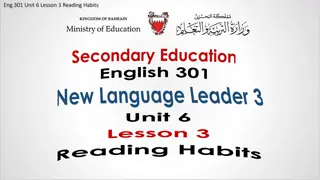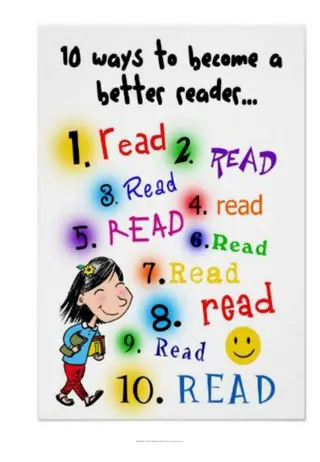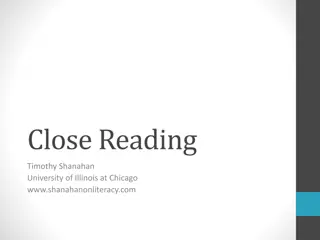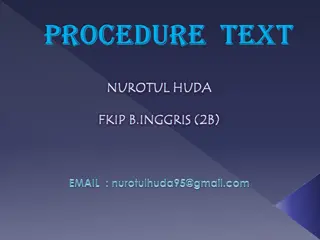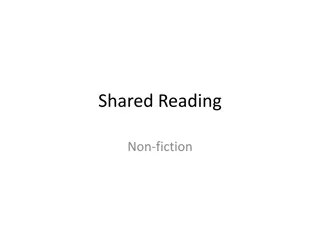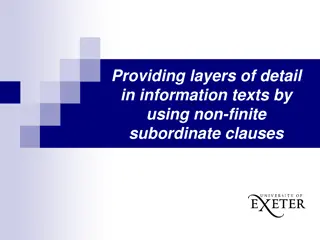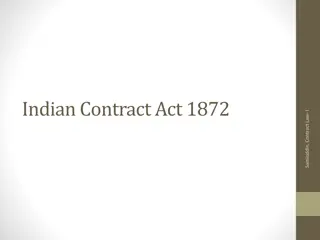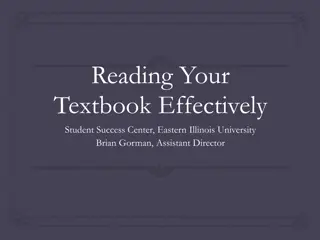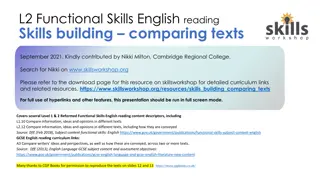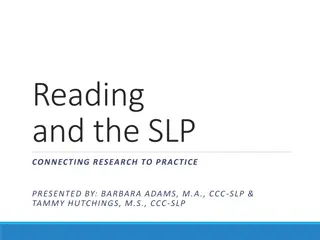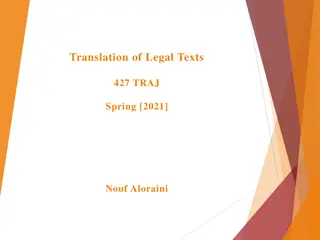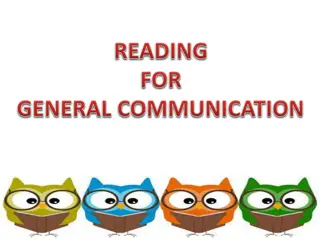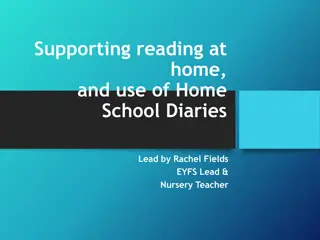Texts Worth Reading: Unit 2Produced Under U.S. Department of Education Contract
This production offers a selection of valuable texts from Foundational Unit 2 under the supervision of the U.S. Department of Education. The materials were created in collaboration with StandardsWork, Inc. in 2016, ensuring high quality and relevance to educational standards. Dive into enriching content carefully curated for educational purposes.
Download Presentation

Please find below an Image/Link to download the presentation.
The content on the website is provided AS IS for your information and personal use only. It may not be sold, licensed, or shared on other websites without obtaining consent from the author.If you encounter any issues during the download, it is possible that the publisher has removed the file from their server.
You are allowed to download the files provided on this website for personal or commercial use, subject to the condition that they are used lawfully. All files are the property of their respective owners.
The content on the website is provided AS IS for your information and personal use only. It may not be sold, licensed, or shared on other websites without obtaining consent from the author.
E N D
Presentation Transcript
Selecting Texts Worth Reading Foundational Unit 2 Produced Under U.S. Department of Education Contract No. ED-VAE-13-C-0066 With StandardsWork, Inc. 2016
Three Key Advances Prompted by the CCR Standards 1. Text Complexity: Regular Practice With Complex Text (and Its Academic Language) 2. Evidence: Reading and Writing Grounded in Evidence From Text 3. Building Knowledge: Building Knowledge Through Content-Rich Nonfiction 2
Key Advances Build Toward College and Career Readiness 3
Unit 2 Objectives Selecting Texts Worth Reading Understand the research base that explains the importance of text complexity to students preparedness. Understand the staircase of complexity and the central role it plays in the CCR Standards for Adult Education. Understand the features that make a text complex. Understand how careful consideration of text(s) can yield insights for instruction and deeper understanding of what it takes to comprehend a text. 4
Rationale for Focusing on Complex Text Relevance and Importance Based on the Research The complexity of text that students can read is the greatest predictor of success in college (ACT study). The gap between the complexity of college and high school texts is huge (four years!). Too many students are reading at too low a level. (Fewer than 50% of graduates can read sufficiently complex texts.) Deficiencies deny equal opportunity . . . 5
Implications of Focusing on Complex Text on Instruction The CCR Standards have raised the bar for what students should read and understand at each level. Passages should be of high quality so they are worthy of close reading. CCR-aligned questions cannot be asked about passages lacking complexity and fully developed ideas. 6
What Is Complex Text, Exactly? Complex sentences Uncommon vocabulary Lack of words, sentences, or paragraphs that review or pull things together for the student Lengthy paragraphs Text structure that is less narrative and/or mixes structures 7
What Is Complex Text, Exactly? (Continued) Subtle and/or frequent transitions Multiple and/or subtle themes and purposes Dense information Unfamiliar settings, topics, or events Lack of repetition, overlap, or similarity in words and sentences 8
Which Two of These Factors Cause Students the Most Difficulty? Complex sentences Uncommon vocabulary Lack of words, sentences, or paragraphs that review or pull things together for the student Lengthy paragraphs Text structure that is less narrative and/or mixes structures 9
Three-Part System for Measuring Text 1. Quantitative Scale 2. Qualitative Measures 3. Professional Judgment (of Reader and Task) 10
What Do These Parts Mean? How Do They Work Together? 1. Quantitative Scale: What a computer can see and measure 2. Qualitative Measures: Text features best judged by human evaluation (structure, language clarity and conventions, knowledge demands, and purpose) 3. Professional Judgment: What the instructor does with this text to help students read and understand it 11
1. Quantitative Scale Degrees of Reading Power Flesch- Kincaid The Lexile Framework Reading Maturity CCR Levels of Learning ATOS 2.75 5.14 42 54 1.98 5.34 420 820 3.53 6.13 B (2nd 3rd) 4.97 7.03 52 60 4.51 7.73 740 1010 5.42 7.92 C (4th 5th) 6.51 10.34 7.00 9.98 57 67 925 1185 7.04 9.57 D (6th 8th) 8.32 12.12 8.41 10.81 9.67 12.01 62 72 1050 1335 E (9th 10th) 11.20 14.10 10.34 14.2 9.57 12.00 67 74 1185 1385 E (11th CCR)) 12
3. Professional Judgment Students who struggle greatly to read texts within (or even below) their text complexity [level] must be given the support needed to enable them to read at an appropriate level of complexity. Even many students on course for college and career readiness are likely to need scaffolding as they master higher levels of text complexity. (From Appendix A, p. 9, CCSS ELA) 14
Determining Text Complexity General Rule: Use the quantitative measures to place a text within a band, and qualitative measures to determine if the text is slightly, moderately, very, or exceedingly complex for that level. Then consider what to do with the qualities of the text through instruction so students can access the ideas and information contained within it (reader and task considerations). (NavigatingTextComplexity) 15
Why Text Complexity Is Essential Academic vocabulary can be learned only from complex texts. Mature language skills needed for success can be gained only by working with demanding materials. Students won t be prepared by reading simplified texts that have restricted, limited, and/or thin meaning. There is no evidence that struggling readers catch up by simply increasing the complexity of simpler texts gradually. 16
Hands-On Practice Now let s analyze the qualitative features of a text . . . 17
Materials Directions for Participants Worksheet: Qualitative Analysis of Text Resource: Excerpt from TheWords We Live By: Your Annotated Guide to the Constitution Resource: Eleanor Roosevelt Speaks to the Members of the American Civil Liberties Union Resource: Quantitative Analysis Chart for Determining Text Complexity Resource: Qualitative Analysis Rubric for Informational Texts 18
Directions 1. Read the excerpt from TheWords We Live By. Decide whether to read the text aloud at your table while others follow along, or to read silently. 2. Look at the quantitative measures listed at the top of the Qualitative Analysis of Text worksheet for The Words We Live By. Consult the Quantitative Analysis Chart for Determining Text Complexity to determine in what level of learning the text belongs. When different measures indicate adjacent levels, look at the overlap in ranges between levels to decide in which level to place the text. 19
Directions (Continued) 3. Review the Qualitative Analysis Rubric for Informational Texts. For each category or text feature (structure, language clarity and conventions, knowledge demands, and purpose), provide evidence in the blank space for why you think the text is or is not especially challenging in that category. Share your insights with a partner. 20
Directions (Continued) 4. Share your evidence with other participants at your table and discuss any points of agreement or disagreement. Rather than discussing the rating itself, focus on the evidence from the text that supports your rating on the qualitative rubric: What did you read in the text that made you think about it in this way? Can you point to a specific example? Why does [refer to the specific example] seem to be more moderately complex rather than very complex? 21
Directions (Continued) 5. At your table, assign placement ratings in each category, and finally an overall placement of how complex the text is when you consider all its features. Remember, you are thinking about this text for a certain level of adult education students, so consider how challenging it is for students at that level. 6. Explain your overall placement for how complex the text is in the bottom row of the chart. 7. Now repeat the exercise for the second resource: Eleanor Roosevelt Speaks to the Members of the American Civil Liberties Union. Work Sessions 1 and 2 45 minutes each 22
Reflections Did analyzing the text in this careful way help you notice what would be difficult for students at this level? How would you help students navigate the challenges this text presents? What type of supports might be needed? 10 minutes 23
Next Steps How has participating in this activity changed your thinking about the CCR Standards? How will you use the information and understanding you have acquired to improve your teaching practice and student learning? What additional training and tools would strengthen your ability to do so? 24
